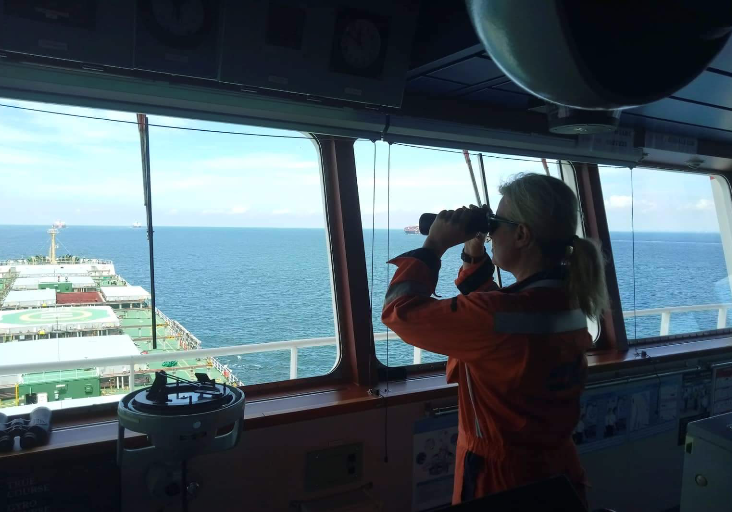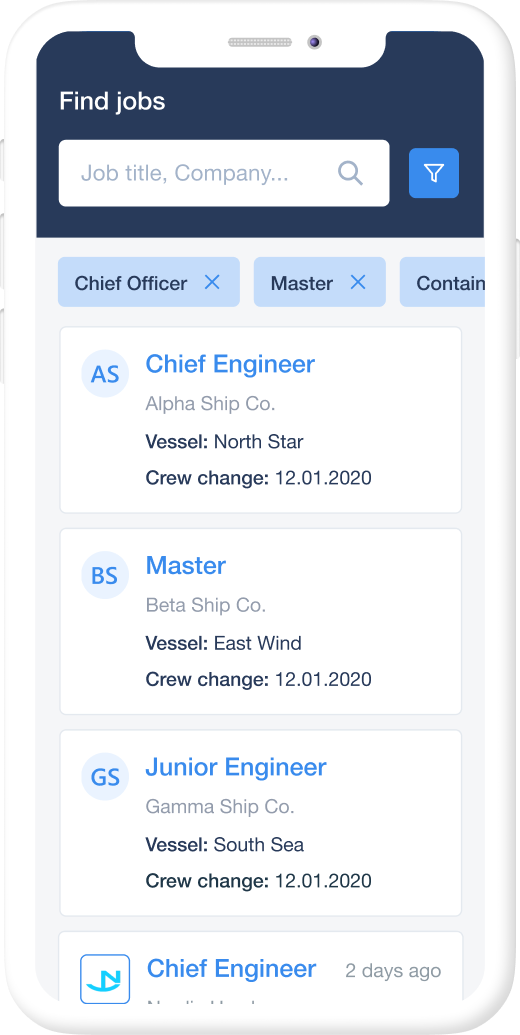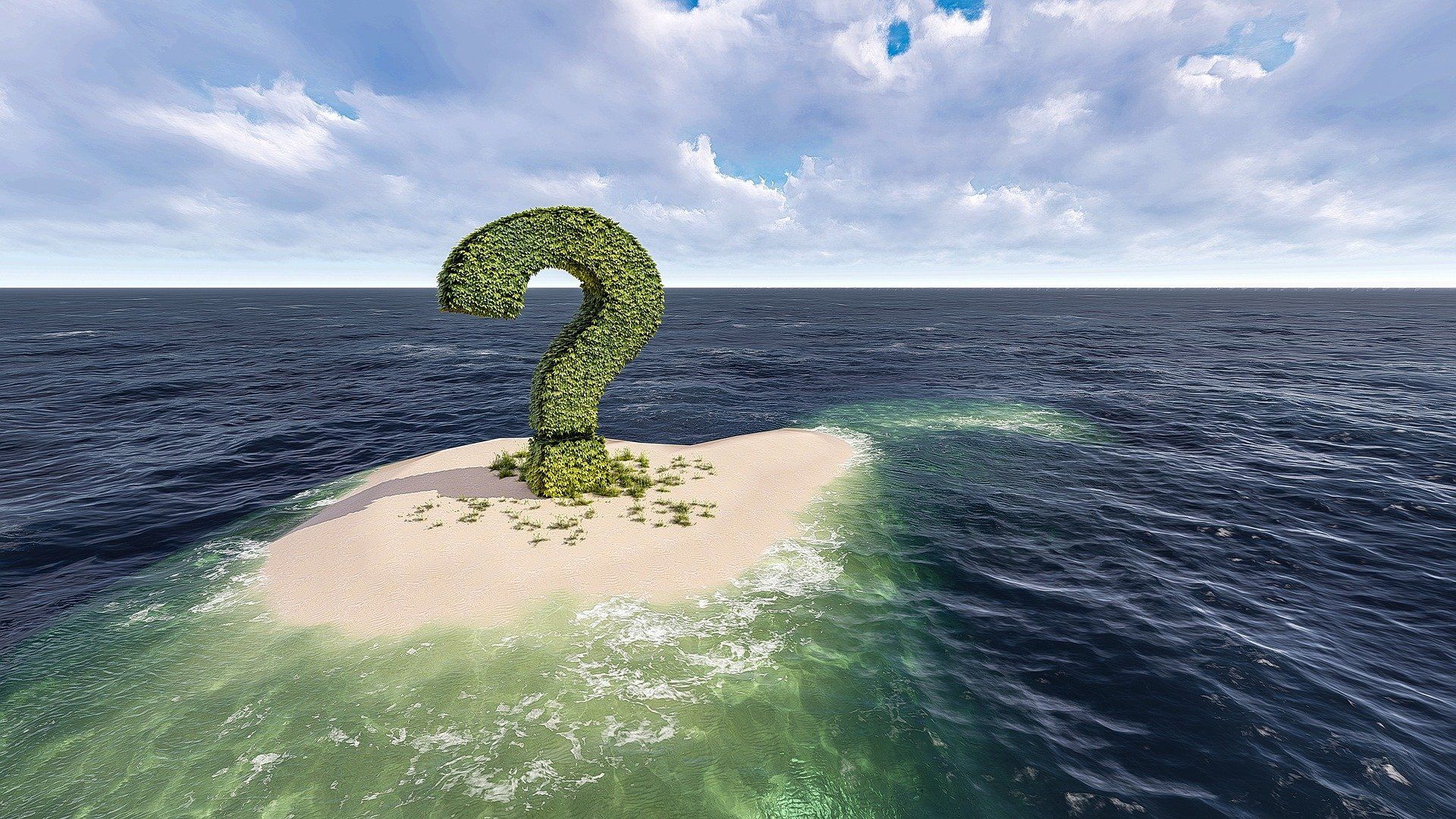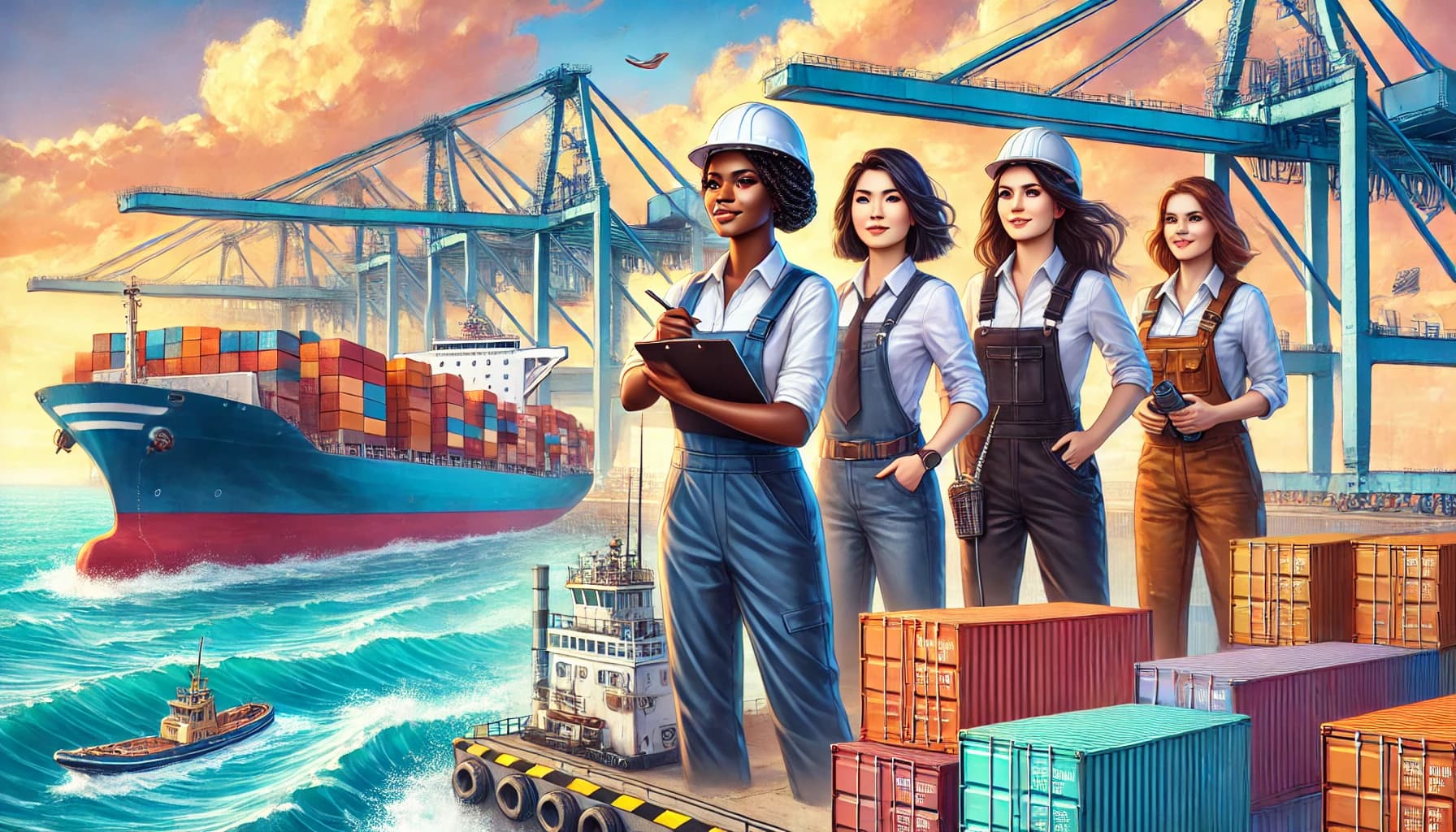Image Courtesy of the IMO's #WomenInMaritime Campaign
When you picture the maritime industry, what comes to mind? Maybe you see sailors steering huge ships, working with big engines, and hauling heavy ropes. Traditionally, this image is often of men. But times are changing.
Today, more and more women are making waves in the maritime sector. Although the maritime industry remains a male-dominated industry, women are taking on active roles and showing they belong.
This article explores why it's important to build a barrier-free workplace for women in the maritime industry and how everyone in the maritime community can help.
Read more:Women in Maritime: The Stats You Need to Know
History of Women in Maritime
In the past, it was tough for women to work at sea. It was seen as a "man's world." Some women even disguised themselves as men to get jobs on ships. While rare, some women, usually captains' wives or daughters, managed ships.
During World Wars I and II, many men went to war, leaving job openings. Women stepped up, proving they could do the work just as well as men, including in shipbuilding. In fact, during World War II, nearly 65% of shipbuilders on the West Coast of the USA were women!
While women proved their capabilities, they faced challenges holding onto their jobs when the men returned home after the war. Thankfully, things have improved, but there's still work to be done.

The Current State of Women Seafarers
Today, only a small percentage of the global seafarer workforce is female. It is estimated that only 2% of all maritime workers worldwide are women. Female seafarers often work on cruise ships and ferries.
A 2021 survey revealed that women are underrepresented in senior-level positions. This shows that there is still a gender imbalance in the shipping industry. Organizations like WISTA International are working to raise awareness and promote opportunities for women in the maritime industry. These groups support gender diversity and inclusion and help women working in this field.
Celebrating Women Seafarers
To recognize the contributions of women seafarers, the International Maritime Organization (IMO) created the International Day for Women in Maritime, celebrated every year on May 18th.
This day highlights the importance of gender equality and aims to encourage the recruitment, retention, and sustained employment of women in the industry. The goal is to support the United Nations Sustainable Development Goals, particularly Goal 5, which focuses on achieving gender equality and empowering all women and girls.
IMO's Commitment
The International Maritime Organization IMO is committed to creating a barrier-free working environment for women in maritime.
IMO Secretary-General Kitack Lim has emphasized the need to break down barriers and ensure a work environment that is enabling, supportive, and inclusive.
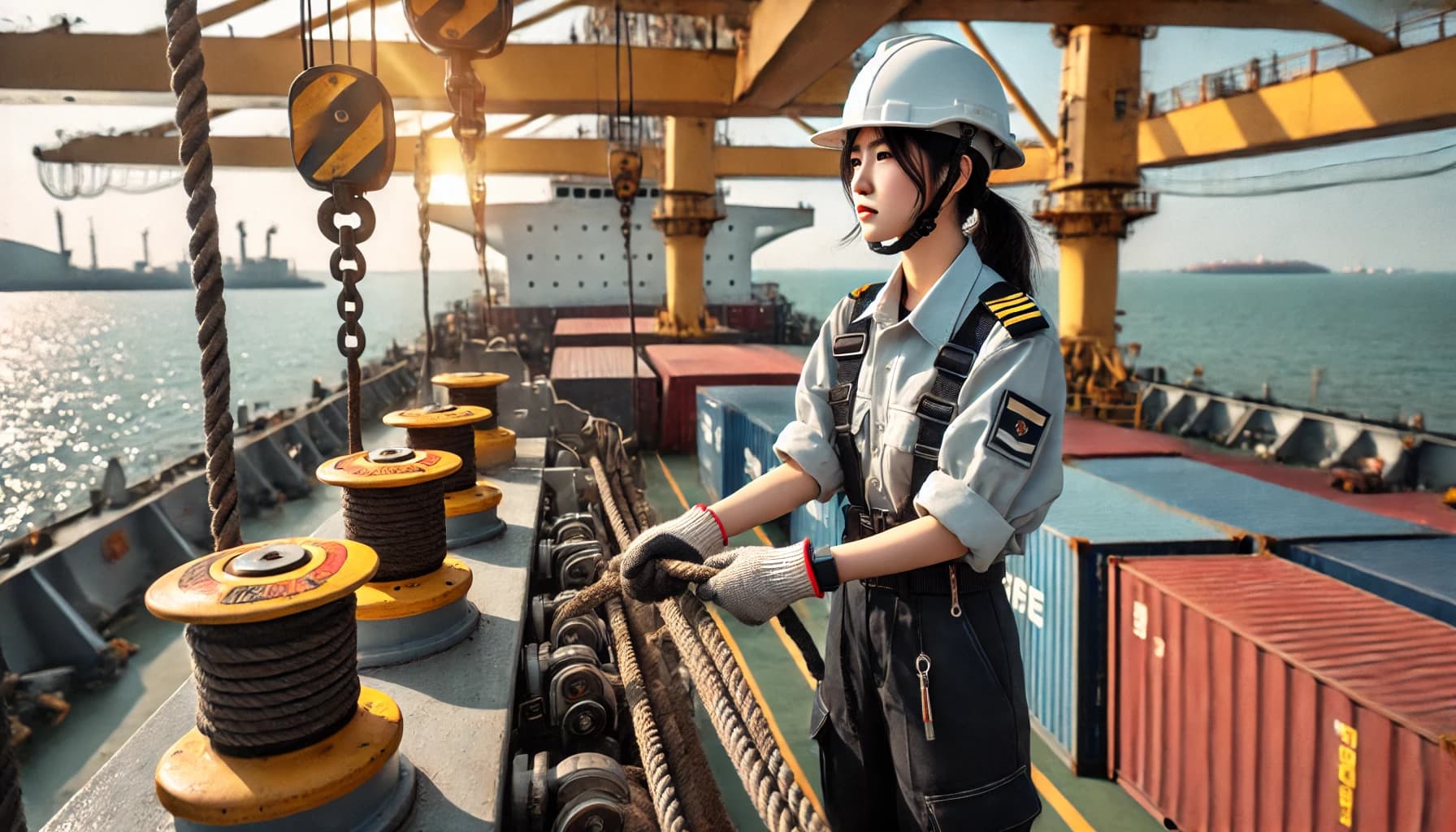
In a speech, Lim acknowledged the limited number of women working in the maritime industry.
"It is recognized that diversity in maritime benefits the entire sector. Women in maritime are working everywhere to support the transition to a decarbonized, digitalized, and more sustainable future.
"Let's take this opportunity to celebrate the many women contributing to the future of maritime: maintaining an engine on a ship, running a company, drawing up a contract, surveying a vessel, or chairing an IMO committee meeting," Secretary-General Lim added. "While there is much to celebrate, there is also the need for more progress to be made."
Apart from highlighting the relevance of gender equality, the Secretary-General issued a directive.
"At IMO, through training, visibility, recognition, we aim to support a barrier-free working environment for Women in Maritime. Let's work to break down barriers and ensure that we create a work environment that is enabling, supportive, and inclusive of diverse participation by all, without hindrance in the maritime community," he said.
The Women in Maritime programme aims to support this goal through training, visibility, and recognition.
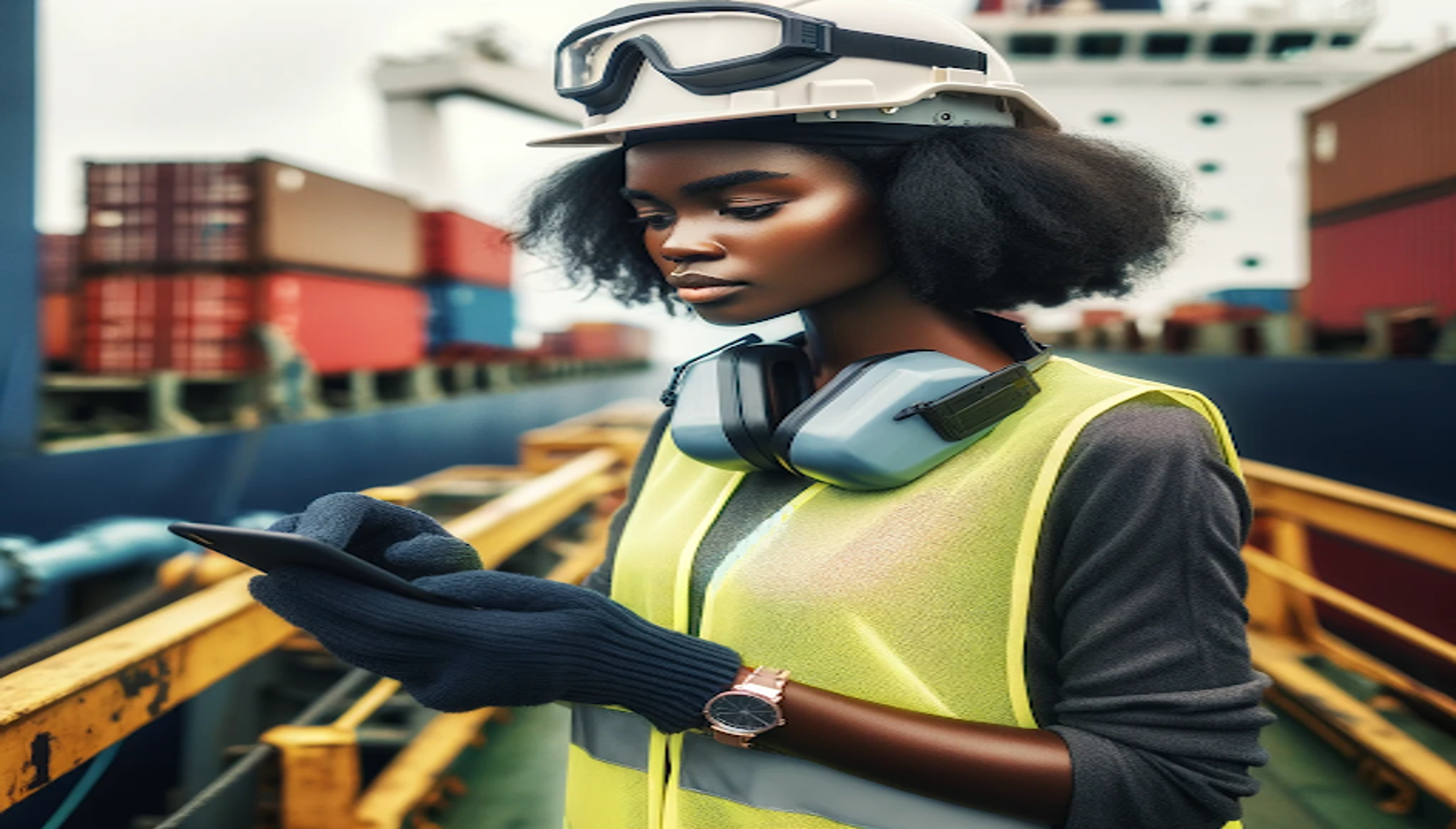
Barriers Preventing Women from Entering the Maritime Industry
One of the biggest reasons why more women don't join the maritime industry is a lack of awareness. Many women simply don't know about the opportunities for women available or don't see it as a realistic maritime career option. The perception that it's a male-dominated field can also discourage women. Some specific challenges facing women include:
- Lack of role models: Without seeing other women succeed in the industry, it can be hard to imagine a maritime career.
- Safety concerns: Female seafarers may have concerns about their safety on board ships.
- Limited access to facilities: Some ships may not have adequate facilities for women.
- Discrimination: Women may face discrimination from male colleagues.
How to Build a Barrier-free Maritime Industry
So, what can shipowners and manning agents do to break down these barriers and encourage more women to pursue a maritime career?
Here are a few ideas:
- Raise Awareness: Actively promote opportunities for women in the maritime industry through recruitment campaigns and outreach programs.
- Create a welcoming environment: Ensure that ships have adequate facilities for women and that a zero-tolerance policy is in place for discrimination and harassment.
- Offer training and mentorship: Provide training programs and mentorship opportunities specifically for women to help them advance in their careers.
- Promote work-life balance: Implement policies that support work-life balance, such as flexible work arrangements and family-friendly benefits.
- Celebrate women's achievements: Recognize and celebrate the achievements of women working in the maritime industry to inspire others.

The Mission to Seafarers
Organizations such as The Mission to Seafarers are working to improve the rights and welfare of all seafarers and have a role to play in raising awareness of the specific challenges and issues facing women in maritime.
How Martide can help
Martide is a maritime recruitment and crew management software that believes in equality. Martide welcomes all people to apply for seafarer jobs, no matter their gender, location, experience, or age.
Martide can help shipping companies find qualified sailors and create specialized pipelines to track applicants. Martide also helps manage crewing, pay, and communication with mariners.
Martide's streamlined approach reduces barriers and allows employees of all genders and races to thrive in the workplace, enabling your shipping company to find the right people for the job through our global talent pool.
Conclusion
The number of women in the maritime industry is growing, but there's still a long way to go. By working together to break down barriers and create a more inclusive environment, we can unlock the full potential of the maritime community and ensure a sustainable future for the shipping industry.
Let's all do our part to create a workplace where everyone, regardless of gender, has the opportunity to succeed.
This blog post was originally published on January 25th 2023 and rewritten and updated on April 29th 2025


Gavin Hirst
Gavin is a contributing writer to the Martide blog who covers topics ranging from life at sea to maritime crew management software. A native Brit who is now based in Auckland, NZ, Gavin is also an SEO expert and partner in a successful digital marketing agency that has offices in New Zealand and the United Kingdom.
New Zealand
